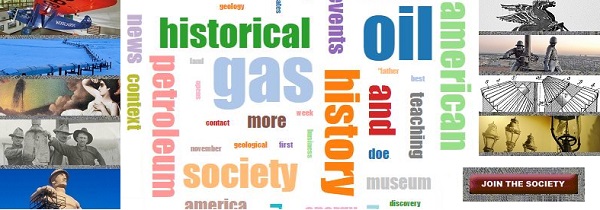Old Colony Oil Company
Old Colony Oil Company began about the time the “Roaring Ranger” in Texas made national headlines in 1917 (see Oil Boom Brings First Hilton Hotel). The new company explored near Duncan, Oklahoma.
Despite production from its first two wells – a 20,000,000-cubic-foot-a-day “gasser” and a well producing 2,000 barrels oil oil a day from the Duncan field – Old Colony Oil Company failed to survive.
The company’s success in the Mid-Continent oilfield helped attract investors for funding additional lease purchases and exploratory drilling. The Mid-Continent’s potential had been revealed as early as 1892 (see First Kansas Oil Discovery). Old Colony Oil soon had operations in Texas, Oklahoma, Utah and Montana – but leasing and drilling costs coupled with a lack of consistent producers brought debt.
However, by 1922 the company’s fortunes had diminished to such a point it could only extract about 125 barrels a day from its nine remaining shallow wells in the diminishing Duncan oilfield.
With oil prices down, by May 1922 Old Colony Oil assets amounted to just $75,000 and the company was defaulting on $10,000 monthly payments due to the Wilkin-Hale Bank. Then the bank begin to fail (Wilkin and Hale of the Wilkin-Hale Bank were directors of the Old Colony Oil).
In the summer of 1922, Okahoma bank examiners investigated the interlocking directorates’ books. Hoping for the big oil strike to balance the ledgers, Wilkin-Hale Bank had used $200,000 worth of essentially worthless Old Colony Oil bonds in a transaction with the Consumers Bank of El Reno – and thereby sunk Wilkin-Hale, El Reno, and Old Colony Oil.
Obsolete Old Colony Oil stock certificates from the 1920s may have collectible value on eBay and “scripophily” websites. Such certificates sometimes are valued as artifacts from investors’ gambles on business ventures that failed.
Dry holes, market behavior, drilling costs, and a host of unpredictable hazards remain part of the high-risk, high-reward U.S. oil patch.
In 1947 experts from Halliburton and Stanolind companies applied a technology on a Duncan oilfield well – the the first commercial application of hydraulic fracturing. Learn more in Shooters – A “Fracking” History.
___________________________________________________________________________________
The stories of other exploration attempts to join petroleum exploration booms (and avoid busts) can be found in an updated series of research at Is my Old Oil Stock worth Anything?
Please support the American Oil & Gas Historical Society and this website with a donation. © AOGHS.


